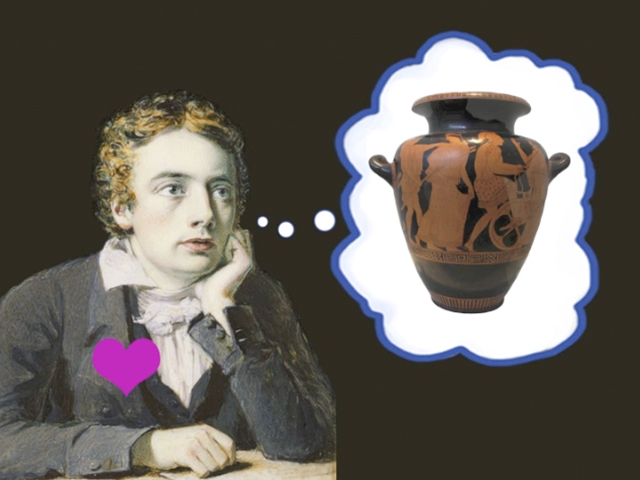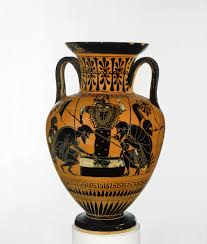
The speaker gazes at the Grecian urn (the relic of antiquity from ancient Greek) and contemplates with the wonder its long duration on earth for centuries. It is unbroken and the bride of calmness as it stand still always. Thus it remains the adopted child of silence as it is incapable of producing any sounds. The speaker sees the different scenes depicted on the urn and feels and appreciates the pastoral charm of the ancient times. Thus, urn acts as the role of a historian. Indeed this visual beauty can express the story of rural life much better than any piece of poetry. He enquires surprisingly as to what legends in rural surroundings is depicted on the urn. Is it a story of Gods or human race or both. Is it a beautiful valley of the temple in Arcady (place in ancient Greek). What kind of men and maiden or Gods are these. What kind of musical instrument they play on. Thus, he struck with these different vital figures represented on the urn.
The poet can see the figure of a piper playing on his musical instrument. He can not hear the musical note made by the piper, but still he can imagine the unfathomable sweetness of it. This unheard music is far sweeter than the music heard by the mortal ears. Here John Keats explores the endless scope of imagination.

Speaker can also spot a young lover sings the song of love beneath the trees. This song shall never end and the tree shall never be bare. This lover can not kiss his lady love, he is almost near to attain his goal. Keats comforts the lover that no need to feel sad at his inability to kiss the girl also remarks that this girls shall never grow old and his love for her will never decline. In these lines the poet compares the permanence of art with transitoriness of human life.

Again the speaker affirms the abiding nature of art as contrast to the ephemeral nature of real life. The beauty and charm of an art can never be lost. Poet thinks about the happiness of the trees, which never shed their leaves nor take leave of the spring season. He appreciates the happy musician who sings pleasant melodies without any exhaustion. Those rhythm of love is always fresh and new. This love remain intact for ever and the lover is always keeps his energy and youthfulness. Earthly love generally ends in sorrow and physical separations and agonies. Hence this sculptured love remains for ever.
Poet describes yet another scene of Christian sacrifice by a mysterious priest leading a cow, which makes a mooing sound towards the sky and is dressed with ceremonial silk and flowers.
The speaker finds a little town by the seashore and a peaceful fort on the mountain. Everywhere is quite because they probably left for this moring ritual ceremony. Not even a single person shall return to the streets to tell why it was void.
The speaker again gazes the urn deeply and describe the distinctive shape and fair attitude. Once again have a glance over the men, maiden and the forest engraved on the urn. This silent form invigorates several thoughts concerning eternity. Even when the old people die the urn shall remain forever even in the midst of all the problems. Finally the urn becomes the sole companion to human. There is nothing real but beautiful. The beauty and the truth are one and the same. This fact is all that actually need to know.
No comments:
Post a Comment
looking forward your feedbacks in the comment box.